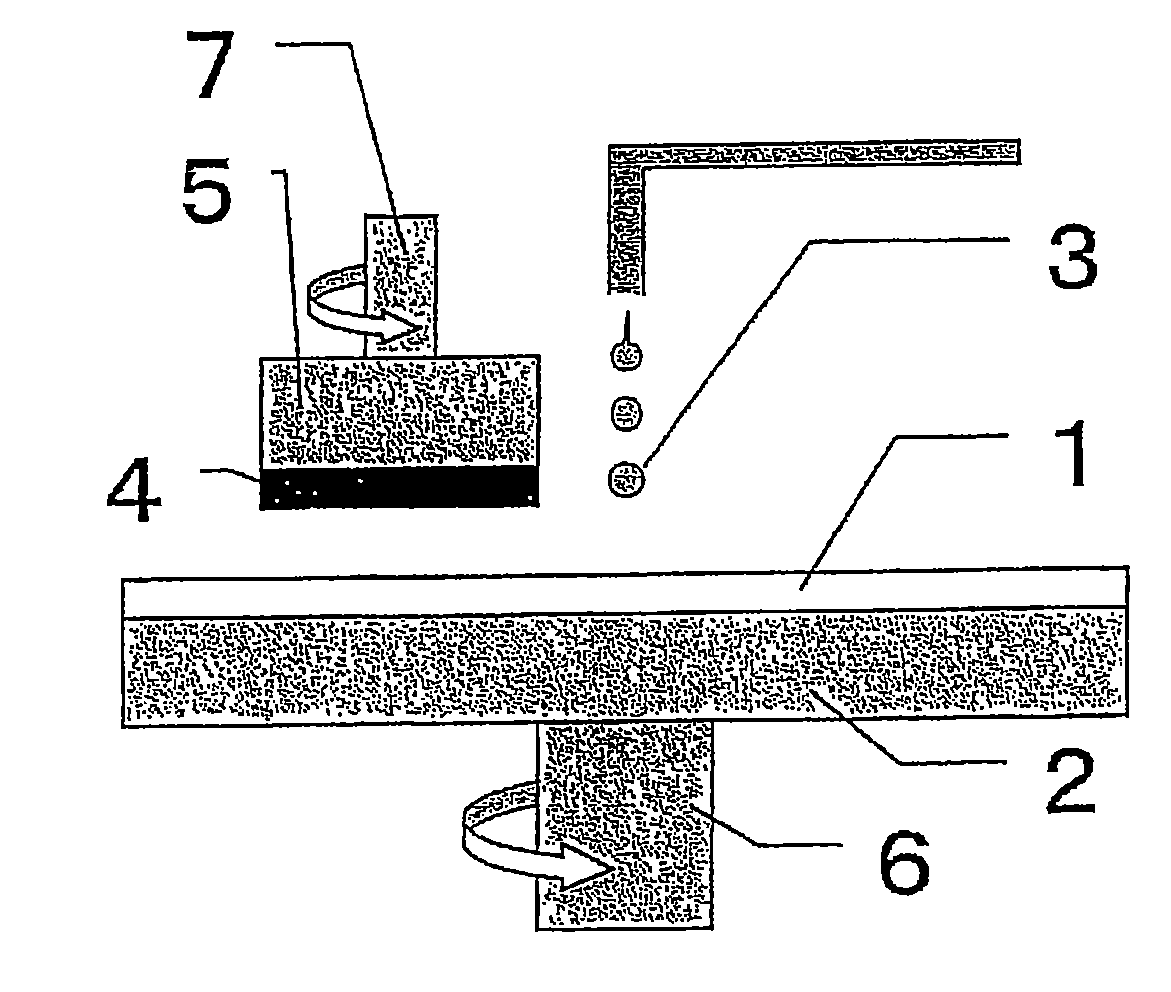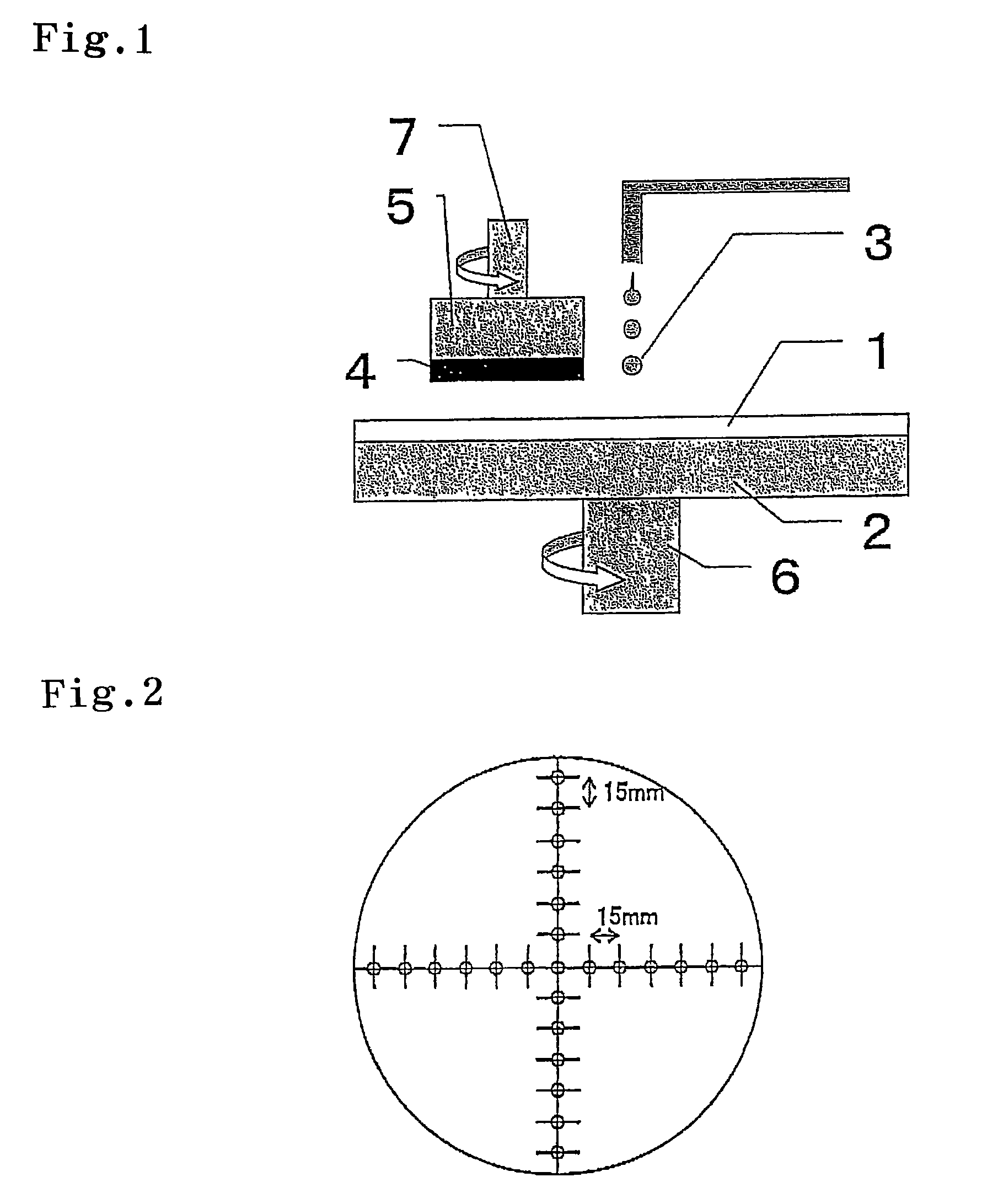Polishing pad
a technology of polishing slurry and grinding dust, which is applied in the direction of lapping tools, resistive material coating, printed circuit non-printed electric components, etc., can solve the problems of grinding dusts and grinding grains that are more likely to clog the groove, and achieve the effect of reducing the polishing ra
- Summary
- Abstract
- Description
- Claims
- Application Information
AI Technical Summary
Benefits of technology
Problems solved by technology
Method used
Image
Examples
example 1
[0096]A reaction vessel was charged with 100 parts by weight of polyether isocyanate-terminated prepolymer (available from UNIROYAL, Adiplene L-325, NCO concentration: 2.22 meq / g) and 3 parts by weight of silicon-based surfactant (available from TORAY Dow Corning Silicone Co., Ltd., SZ-1645, combustion residue:17.2 wt %) and mixed, and defoamed under reduced pressure after adjusting the temperature to 80° C. Then the mixture was drastically stirred for about 4 minutes using a stirring blade at rotation speed of 900 rpm, so that bubbles were taken into the reaction system. To this mixture, 26 parts by weight of 4,4′-methylene bis(o-chloroaniline) (available from IHARA CHEMICAL INDUSTRY CO., LTD., IHARA CUAMINE MT) that was preliminarily fused at 120° C. was added. The mixture was stirred for about 1 minute, and poured into an open mold (cast molding container) of pan form. At the time when the mixture lost the fluidity, the mold was put into an oven and subjected to post curing at 11...
example 2
[0097]A polishing pad was prepared in a similar manner to as in Example 1 except that 3 parts by weight of silicon-based surfactant (available from Gold schmidt, B-8465, combustion residue: 17.0 wt %) was used in place of SZ-1645 (3 parts by weight) in Example 1.
example 3
[0098]A polishing pad was prepared in a similar manner to as in Example 1 except that 3 parts by weight of silicon-based surfactant (available from TORAY Dow Corning Silicone Co., Ltd., SZ-1718, combustion residue: 15.9 wt %) was used in place of SZ-1645 (3 parts by weight) in Example 1.
PUM
| Property | Measurement | Unit |
|---|---|---|
| average cell diameter | aaaaa | aaaaa |
| average cell diameter | aaaaa | aaaaa |
| average cell diameter | aaaaa | aaaaa |
Abstract
Description
Claims
Application Information
 Login to View More
Login to View More - R&D
- Intellectual Property
- Life Sciences
- Materials
- Tech Scout
- Unparalleled Data Quality
- Higher Quality Content
- 60% Fewer Hallucinations
Browse by: Latest US Patents, China's latest patents, Technical Efficacy Thesaurus, Application Domain, Technology Topic, Popular Technical Reports.
© 2025 PatSnap. All rights reserved.Legal|Privacy policy|Modern Slavery Act Transparency Statement|Sitemap|About US| Contact US: help@patsnap.com



